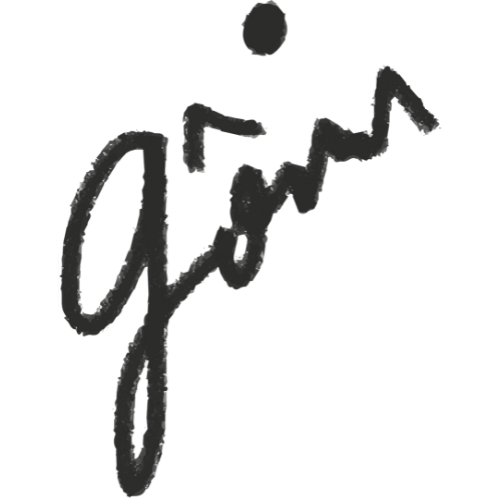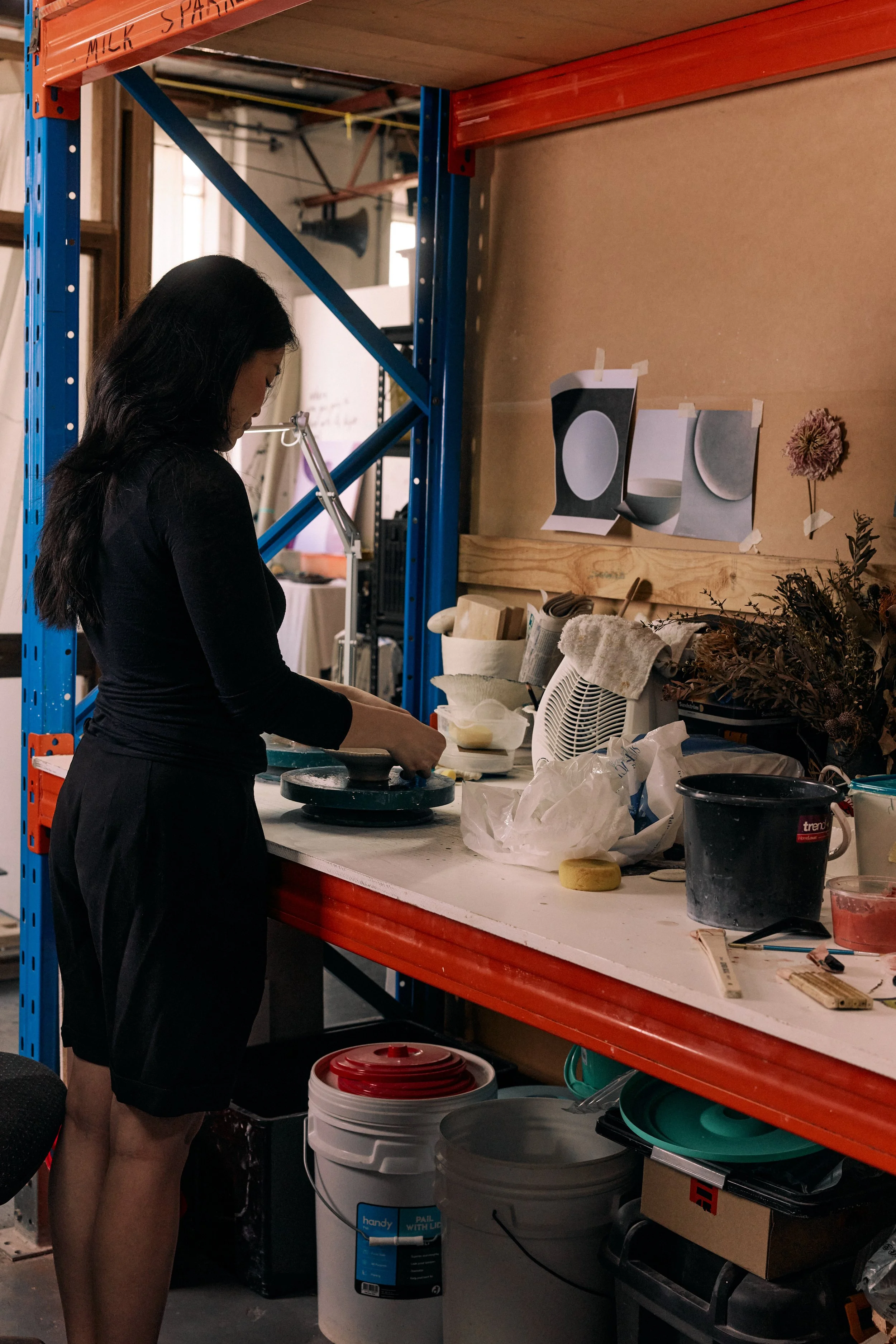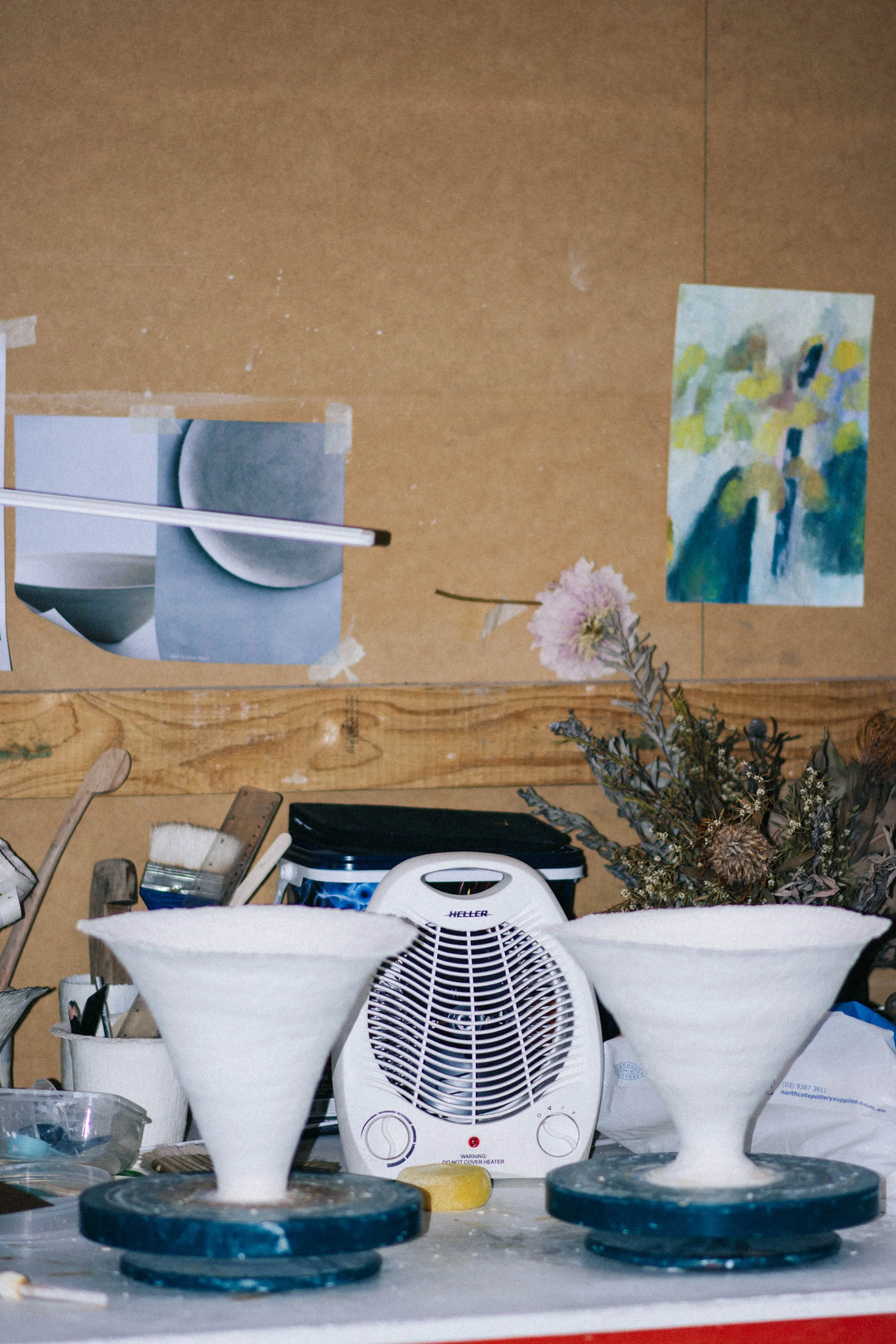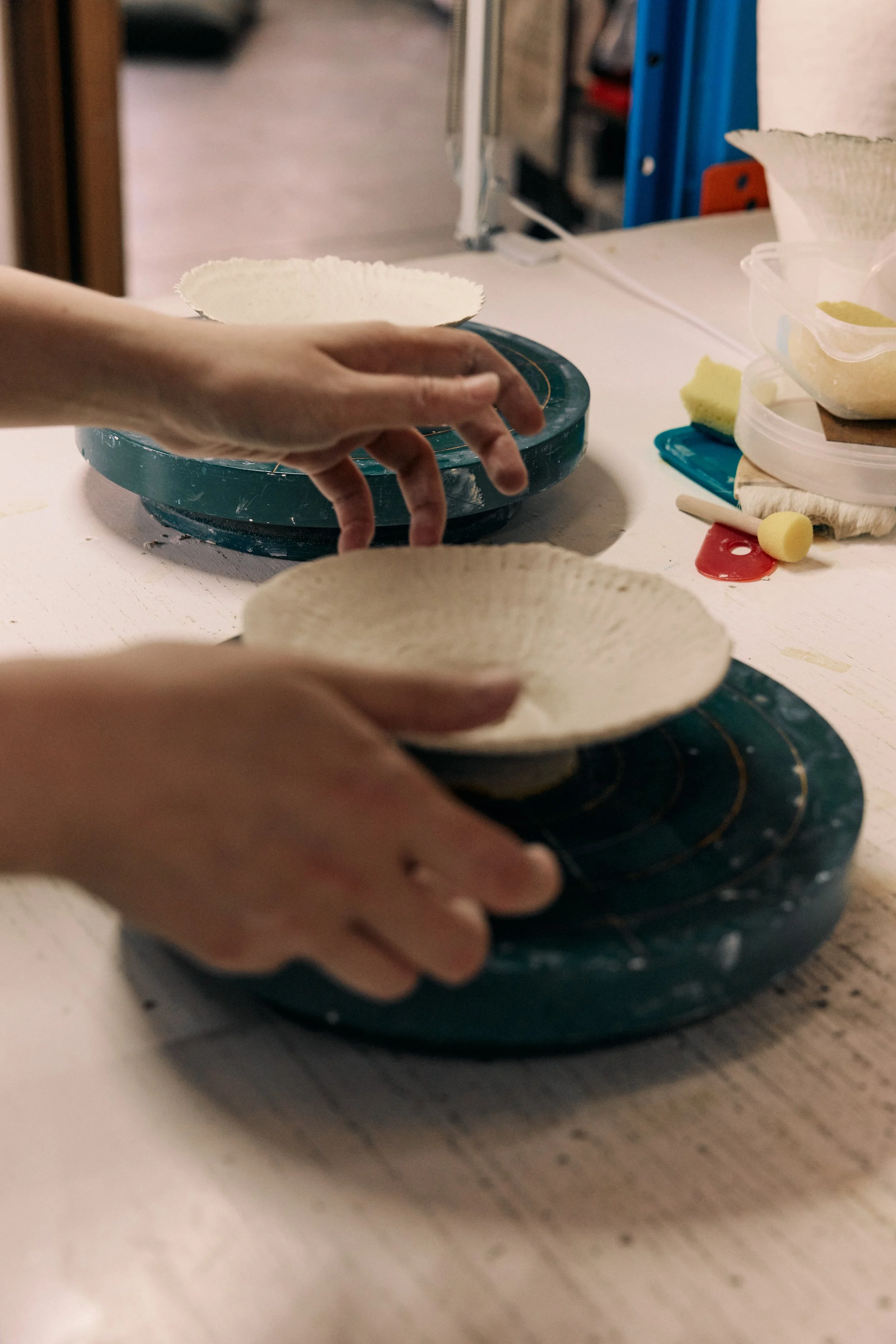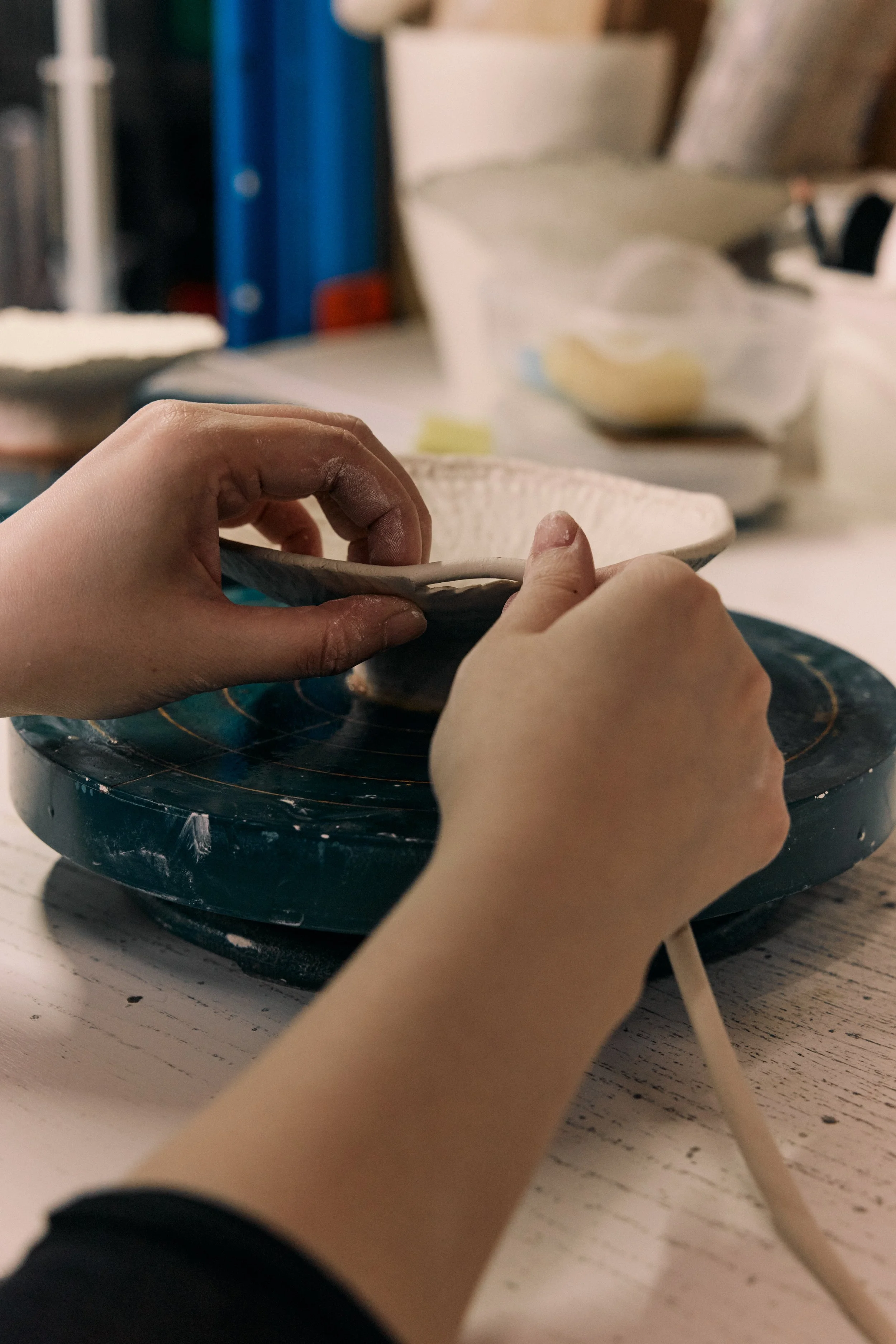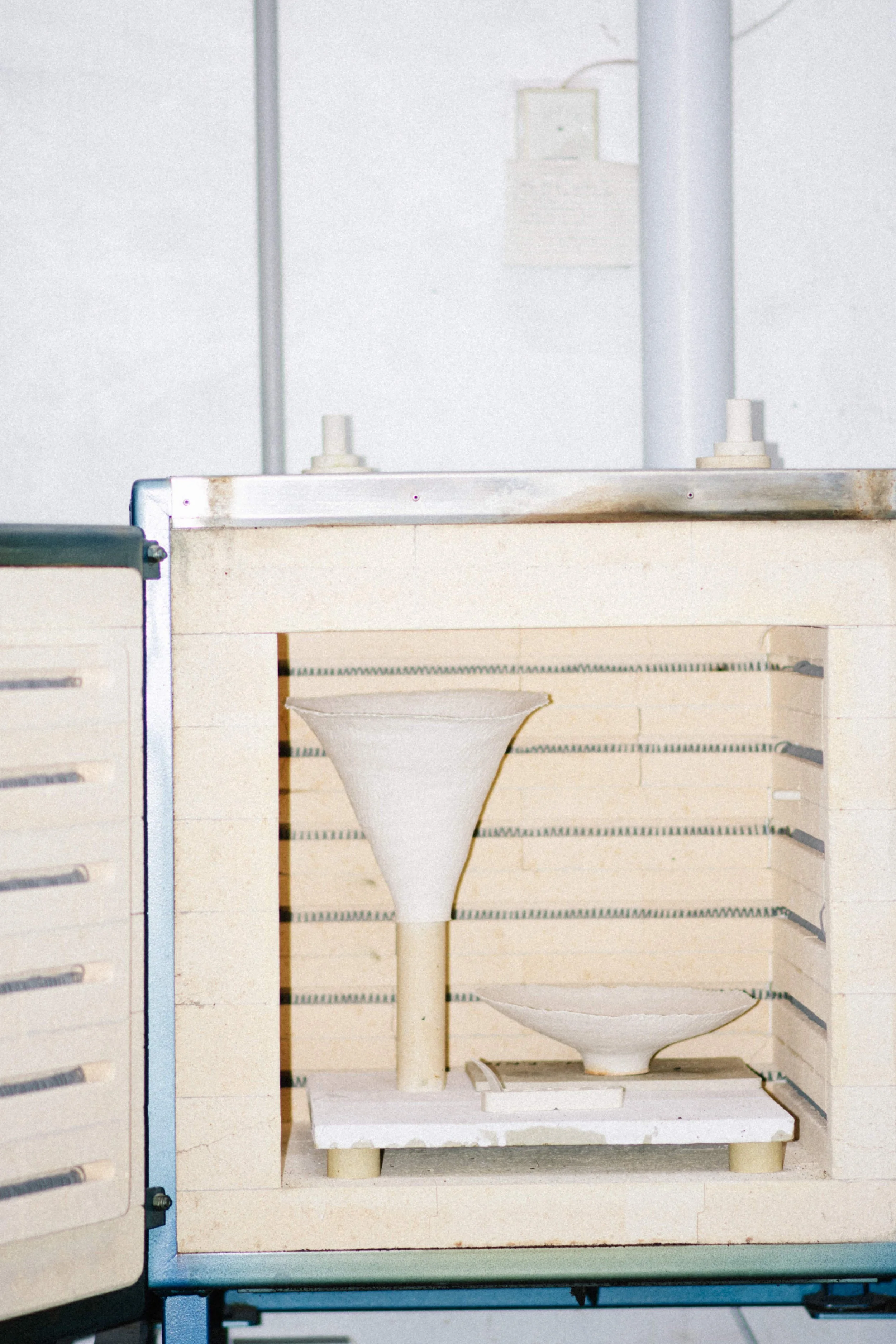A PIECE MAY SIT FOR WEEKS, EVEN MONTHS, AWAITING THE MOMENT IT COMES INTO ITSELF — WHEN NOTHING MORE CAN BE DONE,
AND IT CAN BEGIN TO EXIST FULLY.
PROCESS
Making. Composition. In the Studio.
Situated at the intersection of narrative and craft, the practice begins with a short text that guides the material explorations. Layered compositions then emerge through the laborious and slow process of fine coiling. The work resists the velocity of contemporary making, and the form oscillates between being legible and abstract.
(Form)
The making unfolds in small, repetitive motions. Very thin fine coils are stacked, pinched into form, shapes emerging and dissolving before settling into themselves.
(Form)
This rhythm of making is what gives the work its surprising lightness, separating it from the density of traditional ceramic works.
(Form)
The coils are grafted, rather than formed in a singular sequence. Each coil is no more than half a centimetre thick.
The indentations along each coil come from my fingers, pinching, compressing and smoothing the clay, guiding form through repetition.
*You can actually count how many coils have made up a single vessel.
(Form)
The uneven ridges show where one coil ends and another begins.
The sharp edges mark the moment I choose to stop, an indication that the work is finished.
(Bisque Firing)
At the stage, the structure is stabilise enough for the piece to be handled without deforming the shape, while still remaining porous for later absorption of glaze and colourants.
(Bisque Firing)
The first firing follows, emptying the clay molecules of moisture. At around 1000°C, all remaining water both physical and chemical is driven from the clay.
(Glazing)
Glazing is the final step, a measured response to how the thin surface receives oxides, slips, engobes, and glazes.
I work with very thin washes of glazes as the clay body, now light and porous, accepts only so much more.
(Glazing)
Pigments are brushed on or sometimes pressed through using old newspaper.
The surface then absorbs or resists, colour decides to settle or shift in between the fine lines, light gets drawn in or repelled.
*Paper draws out the water from the oxides, leaving behind a more concentrated colour than brushing.
Each layer of colourants tends to be absorbed instantly, and it becomes less about application than about restraint, of knowing when the surface has taken enough.
The last firing then followed at 1250°C, fusing all molecules into its final form, bringing the process to completion.
(Glaze firing)
